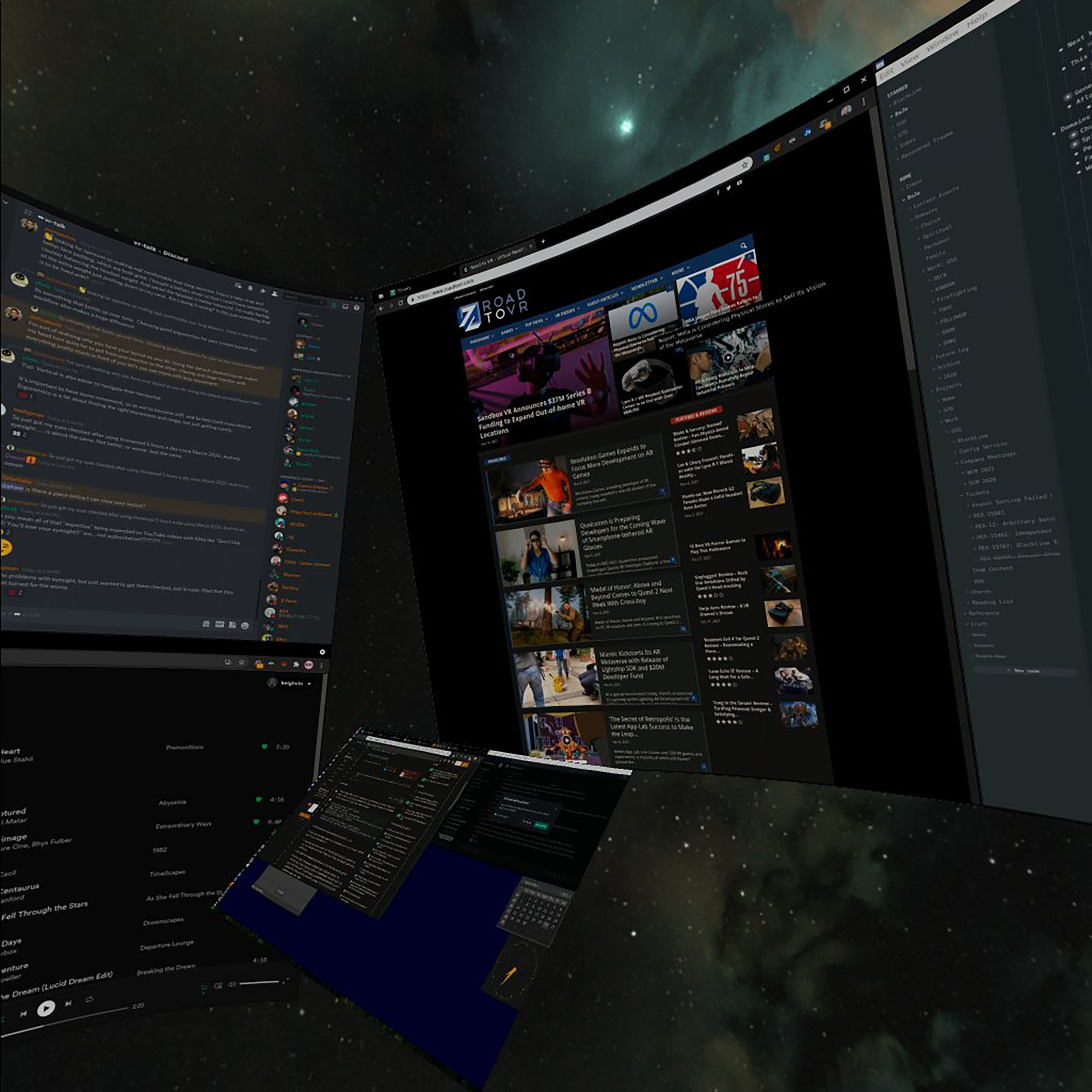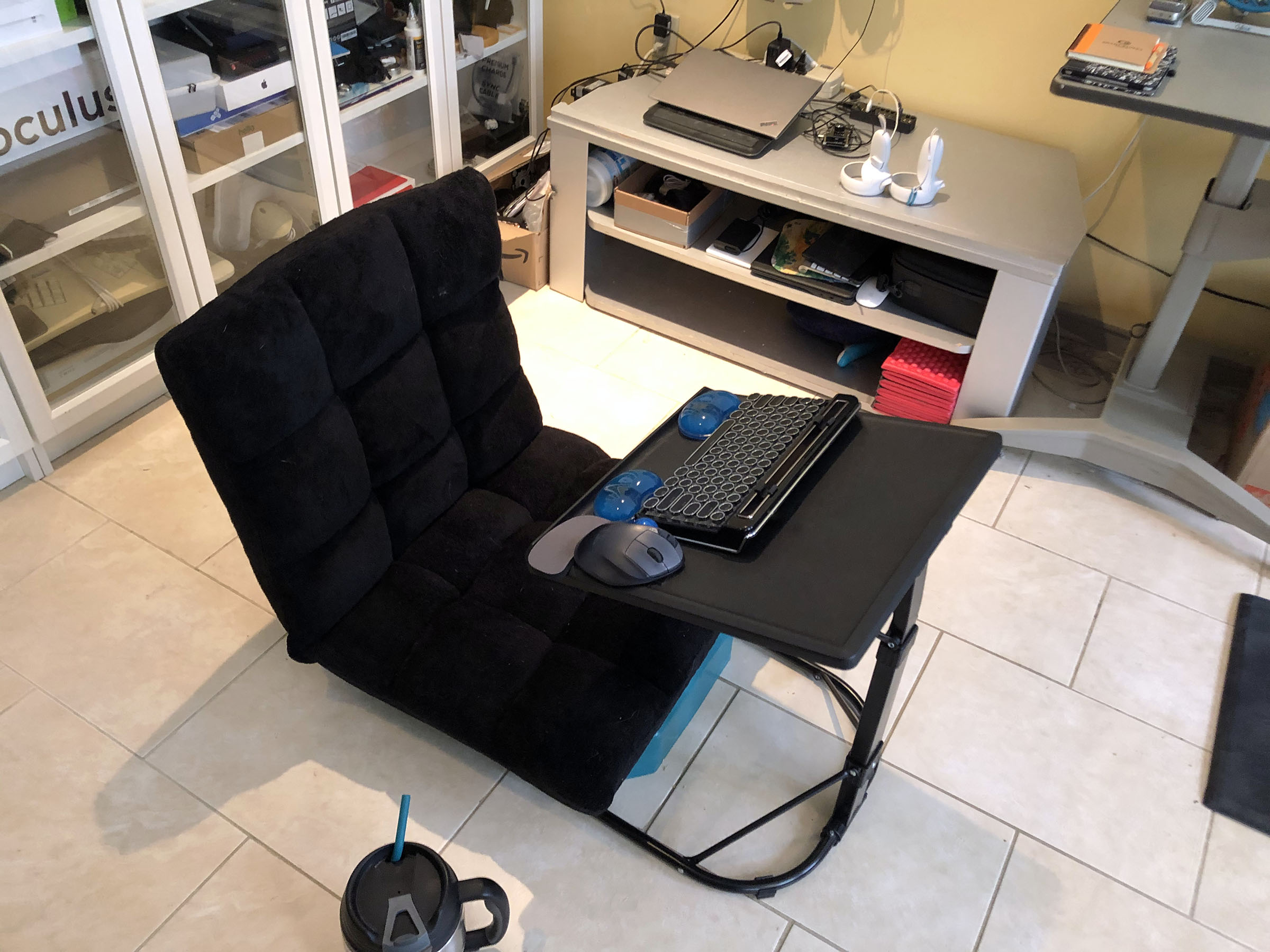When Cathy Hackl’s son wanted to throw a party for his 9th birthday, he didn’t ask for favors for his friends or themed decorations. Instead, he asked if they could hold the celebration on Roblox. On the digital platform, which allows users to play and create a multitude of games, Hackl’s son and his friends would attend the party as their virtual avatars.
“They hung out and played and they went to other different games together,” she says. “Just because it happens in a virtual space doesn’t make it less real. It’s very real to my son.”
The futility of throwing an outdoor pandemic-friendly event in January wasn’t the only reason Hackl’s son lobbied for a digital event. Roblox might be unknown to many over the age of, say, 25, but the 13-year-old platform is booming. Available on most desktop and mobile platforms, it is simultaneously a venue for free games, a creation engine that allows users to generate new activities of their own, and a marketplace to sell those experiences, as well as side products like outfits for a personalized avatar.
It’s also part of the “metaverse.” Once a niche concept beloved of tech enthusiasts, the idea of a centralized virtual world, a “place” parallel to the physical world, has careened into the mainstream landscape this year, as epitomized by Facebook’s decision in October to rebrand as Meta. Millions of people are spending hours a day in virtual social spaces like Roblox and Fortnite. Interest in purely digital ownership—and the technology that proponents believe can ensure the security of persistent virtual experiences—has spiked dramatically, with non-fungible tokens (NFTs) and cryptocurrencies making headlines. Virtual productivity platforms are growing too, with Facebook and Microsoft announcing new ways to collaborate online. Nike is even, analysts say, preparing to sell virtual sneakers. Hybrid offices, video-based education and online social communities are just a few of the ways in which more of our lives—for better or worse—is spent in digital spaces.

People like Hackl have already been heading in that direction for years.
After she was introduced to VR in the late 2000s, Hackl says she “pivoted really hard” into it. She reoriented her media career toward cinematic virtual reality work and then moved onto work with headset manufacturers, eventually serving as a “VR evangelist” for the HTC Vive headset. Today she says she’s known as the “godmother of the metaverse.”
For many younger people, like her son, such a pivot isn’t even necessary: they’re growing up with the expectation that a large part of their future will exist in the metaverse. It might be time for the rest of us to get on board—whether we like it or not.
Metawhat?
The word “metaverse” is often traced to Neal Stephenson’s 1992 dystopic, cyberpunk novel Snow Crash, and many see a more recent inspiration in the dazzling warren of experiences at the heart of Earnest Cline’s 2011 novel Ready Player One. However, the metaverse is far from the stuff of sci-fi. It’s not even new.
Online communities have existed since at least the mid-1980s, and grew in the 1990s with chatrooms, AOL instant messenger and the first social media sites. The game World of Warcraft became a persistent social scene for millions in the early 2000s, and communities have continued to sprout up within and around games. Today, logging onto Fortnite, joining a chat with friends over a console platform and launching into a game with them is, especially to younger generations, just as social an experience as most other physical interactions.
Whether in virtual reality (VR), augmented reality (AR) or simply on a screen, the promise of the metaverse is to allow a greater overlap of our digital and physical lives in wealth, socialization, productivity, shopping and entertainment. These two worlds are already interwoven, no headset required: Think about the Uber app telling you via location data how far away the car is. Think about how Netflix gauges what you’ve watched before to make suggestions. Think about how the LiDAR scanner on newer iPhones can take a 3D scan of your surroundings. At its core, the metaverse (also known to many as “web3”) is an evolution of our current Internet.
“You’ve got your goggles on, 10 years from now, but they’re just a pair of sunglasses that happens to have the ability to bring you into the metaverse experience,” says John Riccitiello, CEO of Unity, maker of a video game engine that is increasingly used to develop immersive experiences on other platforms. “You’re walking by a restaurant, you look at it, the menu pops up. What your friends have said about it pops up.”
Read more: The 100 Best Inventions of 2021
For Riccitiello, the most exciting part of the metaverse is what it might mean for our relationships.
The idea that we might be able to “feel like we’re together when we’re not,” he argues, could likely lead someone to create a company on par with Facebook and Apple.
Banks and investors are taking note.
“There’s clearly a kind of a desire to move that direction,” says John Egan, CEO of L’Atelier BNP Paribas and an investment analyst focusing on emerging technologies. “This metaverse concept gives us the opportunity to create any universe that we’ve ever imagined.”
More than a social network
Hackl’s son wasn’t alone in having a birthday party on Roblox over the past year; the 16-year-old creator of the Roblox game Math Obby, who goes by the username 0bid0, threw himself a party to which he invited not just friends from school and Twitter, but also fans of the game. “I couldn’t manage to make plans in real life because of the pandemic, so I took the chance of building a cool place to host the virtual event,” he tells TIME.
Kids are not the only ones wading out into the metaverse breakers. Paul Tomlinson, 41, has worked remotely for years, living in rural Maine with his family and managing tax and financial-processing software for a firm that works with municipal and state governments. There’s “nothing sexy” about the job, he says, but it does involve needing to have eyes on a large amount of data at once. A few years ago, this meant his desk had four different computer monitors on it. The cumbersome office setup was already a difficult and messy solution, but add in a disruptive (but adorable) cat and it became untenable.
Read more: Nvidia CEO Jensen Huang on the Fusion of Virtual and Physical Worlds
Tomlinson had always been interested in virtual reality, but it wasn’t until he tried the Oculus Quest headset and was introduced to a productivity app called Immersed that he found the answers to his work conundrum. Immersed pairs with your computer and, in the headset, sets up a workspace that allows for multiple virtual screens that you can arrange or size in whatever way you choose. And, crucially for Tomlinson, it’s very difficult for cats to mess with virtual desktops.
“Within a week, I took the monitors off of my desk,” he says. “It just made my life so much better.”
For more than two years now, he has almost exclusively used virtual reality for his 40- to 50-hour work weeks: “Unless it’s a business-critical meeting, I typically don’t take off the headset.”


Immersed VR has already netted millions in investment dollars and partnered with Facebook, Microsoft and Samsung in various roles. And for companies developing headsets, the COVID-19 work shake up provides an opportunity to do just as Renji Bijoy, Immersed VR’s founder and CEO suggests, making the case that VR is less of a novelty and more of a quality-of-life tool.
Few companies want that narrative shift more than Facebook, now Meta. Dodging damaging leaks, deflecting international calls for antitrust action and shrugging off its own stalled attempts to launch a decentralized digital currency, the social network, which owns the VR brand Oculus, has leaned far into the future that it promises to provide. Late in the summer, Facebook announced Horizons Workrooms (through the use of its Oculus Quest) as an alternative to the Zoom meetings that have become commonplace to many remote workers. (Facebook declined multiple requests to provide comment on this story.)
Read more: Here’s What Meta—Facebook’s New Parent Company—Plans to Do
For now, spending any part of a workday in the metaverse still seems like a far-off dream for most of the global workforce. Tomlinson recognizes this. His coworkers took a while to adjust to the fact that he usually appears in group video meetings as an avatar, and his family is “not as enamored” as he is. Still, he sees himself as a “pioneer,” of the future, and is comfortable in that role.
“I am an outlier, and it’s a good thing that we have outliers who don’t get bored easily,” he says. “I have no hang ups about strapping boxes to my face for eight hours a day. I can do that.”
Real money in the metaverse
A new kind of working from home is only part of what the metaverse can provide those out to make a buck. Case in point: metaverse entrepreneur Carrie Tatsu, 48. She has spent over 15 years making her living designing, marketing and selling avatars, pets and accessories for citizens of Second Life, a game that launched in 2003 as a blank-slate digital world where users could buy land and spend actual money on in-world customizable clothing. (If you think that sounds a great deal like the metaverse currently being touted by big tech, you would be correct.) Tatsu joined in a moment of dissatisfaction with her marketing job. Because she likes cats, she bought a pet for her avatar. The decision launched her career.
“I thought, well, you know, I think I can make a better cat,” Tatsu says.
It didn’t take long before she and her ex-husband set up a store, Zooby, and earned enough for her to quit her physical-world job to focus on creating Second Life pets and accessories full time. She quickly noticed the way other players were forging real connections to those virtual animals. “There was a paradigm shift in the way I looked at this,” she says. “This wasn’t like joining a video game and competing on something like a first-person shooter. This was a very emotional attachment to something that wasn’t physical.”

With Roblox, that kind of hustle has always been part of the game.
“You can imagine a future where I can go to the [virtual] hat store, and I have a very seamless experience to customize my hat I created, and now I can potentially then sell that hat to other people in the metaverse,” Roblox Chief Product Officer Manuel Bronstein says. “We made it very easy for people to start monetizing those creations.”
Many of those who are taking advantage of that potential are young users. Josh Okunola, for example, is a 17-year-old digital artist from Nigeria, currently studying in London, who has been playing Roblox since 2014. After a few years of exploring, he grew curious about the games’ development tools and using his own artistic talent on the platform. In 2018, he netted his first Roblox paycheck—for $7—though he says his parents didn’t believe it was real because, unable to withdraw it from PayPal, he could only spend it on digital goods.
With blockchain-based games, players can turn the time they spend into cryptocurrency. In the popular Axie Infinity, players buy, train and breed Pokemon-like creatures that are themselves NFTs, each one individually registered on the Ethereum blockchain. An active marketplace allows players to sell the creatures for cryptocurrency. Axie Infinity has seen a lot of international popularity during the pandemic; the Philippines has particularly seen a great deal of growth, with players of all ages using the game to earn money. You need to own three of these “Axies” before you can even play the game, and currently the lowest priced creatures on the marketplace are over $100.
These purely digital opportunities to make a living are inspiring a young generation to believe that the metaverse is the place to make their fortunes.
“Eventually I was able to cash out $1,000 from the platform,” Okunola says of his Roblox art. “My parents were [in] shock because it was very rare to see a 16-year-old make that much in just a little time from a side hobby.”
Reality Check
If there were ever any hope of weaning children off screen time, it was dashed by the pandemic. One German study published by DAK-Gesundheit found that usage of social media and video games was up by at least 60% in 2020 over 2019 among children between 12 and 17. Now imagine not just a screen, but a world.
Tatsu is the mother of two children and, despite having created a successful career in digital spaces, she insists that her children spend as much of their time as possible in the real world.
“It’s so important for humans to be with humans in real life,” she says. “And so I think that as kids grow up in this space, there will have to be outlets for people to engage, go smell a flower here, walk in on a trail, have a real conversation with your friend and throw a ball. I mean, even though you can simulate that, the simulation is not the same. And so I feel in some ways bad for my kids.”
We all have far more to worry about in digital spaces than just time spent. The very probable idea that this is the direction technological innovation is heading does little to take into account whether it should be the direction we are heading.
If the metaverse is essentially an extension of the internet we currently have, one only has to think about the myriad problems that we have yet to solve in our online existence—hacking, catfishing, harassment, hate speech—to see how truly perilous a future on the metaverse could be.
The consulting firm GlobalData notes concerns in how governments, notably the U.S., have been sluggish in their approach to cybersecurity concerns such as the rise of artificial-intelligence enabled misinformation, including videos known as deepfakes.
Read more: Tim Cook on the ‘Basic Human Right’ of Privacy and the Technology That Excites Him the Most
“These false images—again, going back to deepfakes—not only are used to trick users into giving away personal details, but also from a political perspective to convince them of something happening that has not happened or is just simply not true,” Charlotte Newton, a thematic analyst at GlobalData, says.
“It’s important to recognize that there are five really important problems we haven’t yet solved in the mobile internet: data rights, data security, radicalization, misinformation and platform power,” says Matthew Ball, author of the forthcoming The Metaverse: And How it Will Revolutionize Everything. “If the fundamental premise of the metaverse is that we will spend more of our time, labor, leisure, wealth, existence inside virtual worlds, then by definition, every one of those five problems is exacerbated. The amount of data captured and the importance of that data goes up, or the risks of data loss are intensified.”
Read more: The 5 Most Important Revelations From the ‘Facebook Papers’
There’s perhaps a reason many fictional touchstones for a metaverse, including Ready Player One and Snow Crash, take place in grim dystopias.
“There’s no way the metaverse is going to help with things like income inequality, or food deserts, people who cannot buy groceries, disparities and access to health care,” says science fiction writer Ted Chiang, on whose work the 2016 movie Arrival was based. “None of those things are things that you can deliver through the metaverse.”
The Vision
True adherents would beg to differ. They believe that the metaverse has benefits for all, that it can expand access, opportunity, social networks and mental health—though even they have to admit that a lot of the good the metaverse can do is still speculative, and depends on a confluence of events, from hardware deployment to data infrastructure developments, on very fuzzy timelines.
What does exist for sure, argue proponents like Tatsu, is the already realized potential for the metaverse to increase empathy and inspire kindness.
“I think that when you’re in a virtual space, they’re usually smaller, they’re usually more intimate. And I think that when we move into this world, where you really customize your avatar, you develop a more intimate relationship with the people you have online,” she says. “Even though you’re behind a screen or you’re behind a headset, you still see somebody.”
A few years ago, a surreal YouTube video made its way around the internet. In the middle of a standard VRChat session, which is itself a mosh pit of clashing avatars and frenetic voice chat, a user who was wearing a full body tracking suit apparently had a seizure. The episode underscored not only the actual distance between people in virtual spaces, but also the outpouring of concern for the person behind a red robot avatar.
Hackl sees the upcoming shift in technologies as a chance to shape a more inclusive mission and purpose. “I feel we’re working on the printing press of the future,” she says, ”being able to preserve, let’s say, a language that is soon to disappear. If you’re able to retain not only in a flat video, you’ll see the sound and you’ll see the movement of lips and stuff. In a 3D performance capture and an actual 3D video, you’ll be able to see a lot of the nuances of how the tongue moves, and the teeth move, and you’ll be able to preserve the same dances as well as artifacts, stories, all sorts of things. I believe that that is something we’re working on today to preserve those stories for the future.”
To her, that future will be a better one, thanks in part to the metaverse.
“When I look at the architects of the internet, they were all men,” Hackl says. “Being a Latina woman that is very publicly out there, I want more people like me. We need to see people like me, in these public facing roles, because you can inspire a lot more people to join and say, ‘Hey, I am welcome in this metaverse world. I can build.’”
For those whose lives are already being lived partly in the metaverse—despite its pitfalls and risks—that building has begun.
More Must-Reads from TIME
- L.A. Fires Show Reality of 1.5°C of Warming
- Home Losses From L.A. Fires Hasten ‘An Uninsurable Future’
- The Women Refusing to Participate in Trump’s Economy
- Bad Bunny On Heartbreak and New Album
- How to Dress Warmly for Cold Weather
- We’re Lucky to Have Been Alive in the Age of David Lynch
- The Motivational Trick That Makes You Exercise Harder
- Column: No One Won The War in Gaza
Write to Peter Allen Clark at [email protected]